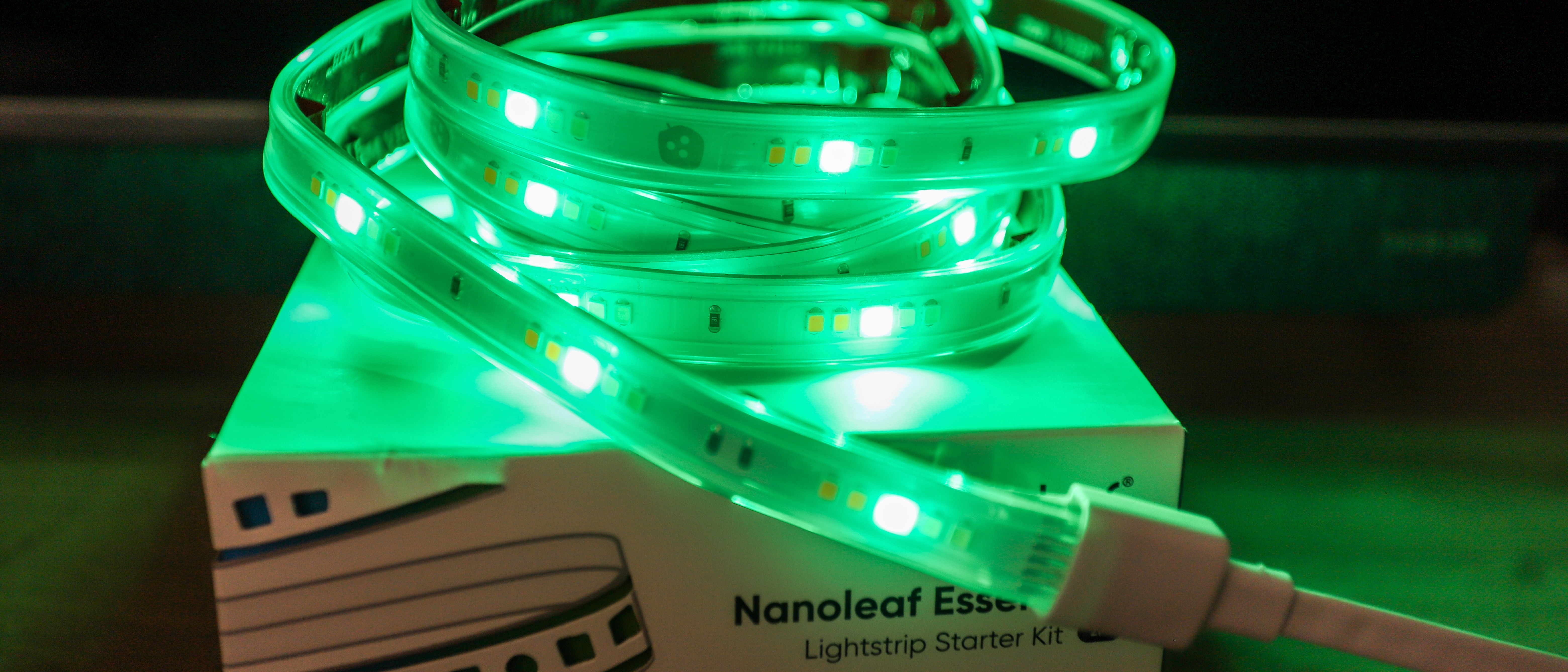TechRadar Verdict
LED light strips aren’t new, but to get one that’s as affordable and smart as the Nanoleaf Essentials Lightstrip isn’t easy. This is the first light strip from the brand known for its wall panels, and Nanoleaf has got it just right. The Essentials Lightstrip is bright, produces beautiful colors and is easy to set up. It’s future-proof with Thread connectivity onboard, but it works just as well on a Bluetooth connection.
Pros
- +
Affordable
- +
Thread and Bluetooth connectivity
- +
Beautiful colors
Cons
- -
Lacks Alexa integration
- -
Displays only single colors
- -
Nanoleaf app not intuitive
Why you can trust TechRadar
30-second review
UPDATE: The Nanoleaf Essentials Lightstrip had a few missing features at launch, namely music and screen syncing. Those have now been rolled out and we've updated our original review below to reflect that change.
Stepping away from its light panels, Nanoleaf has gone back to basics with its Essentials A19 smart bulb and Essentials Lightstrip. What makes them both exciting offerings in the smart lighting market is their affordability without compromising on features.
Like its bulb brother, the Nanoleaf Essentials Lightstrip is also compatible with Apple’s HomeKit and Google Assistant, it’s remarkably easy to set up and has its own little controller that can be wall-mounted to be used like a regular switchboard.
It can definitely give Philips Hue’s Lightstrip Plus a run for its money, especially now (almost a year since its original launch in late 2020) that there's features like monitor syncing which was missing until the last round of firmware updates.
Like the Essentials smart bulb though, the light strip’s full potential can only be unlocked by using a Thread-enabled device like the Apple HomePod mini or the latest Apple TV 4K. But we found its Bluetooth connectivity to more than sufficient for anyone without either of the aforementioned Apple devices.
All in all, the Essentials Lightstrip is an attractive option for anyone looking to brighten up their home decor with some smart lights.
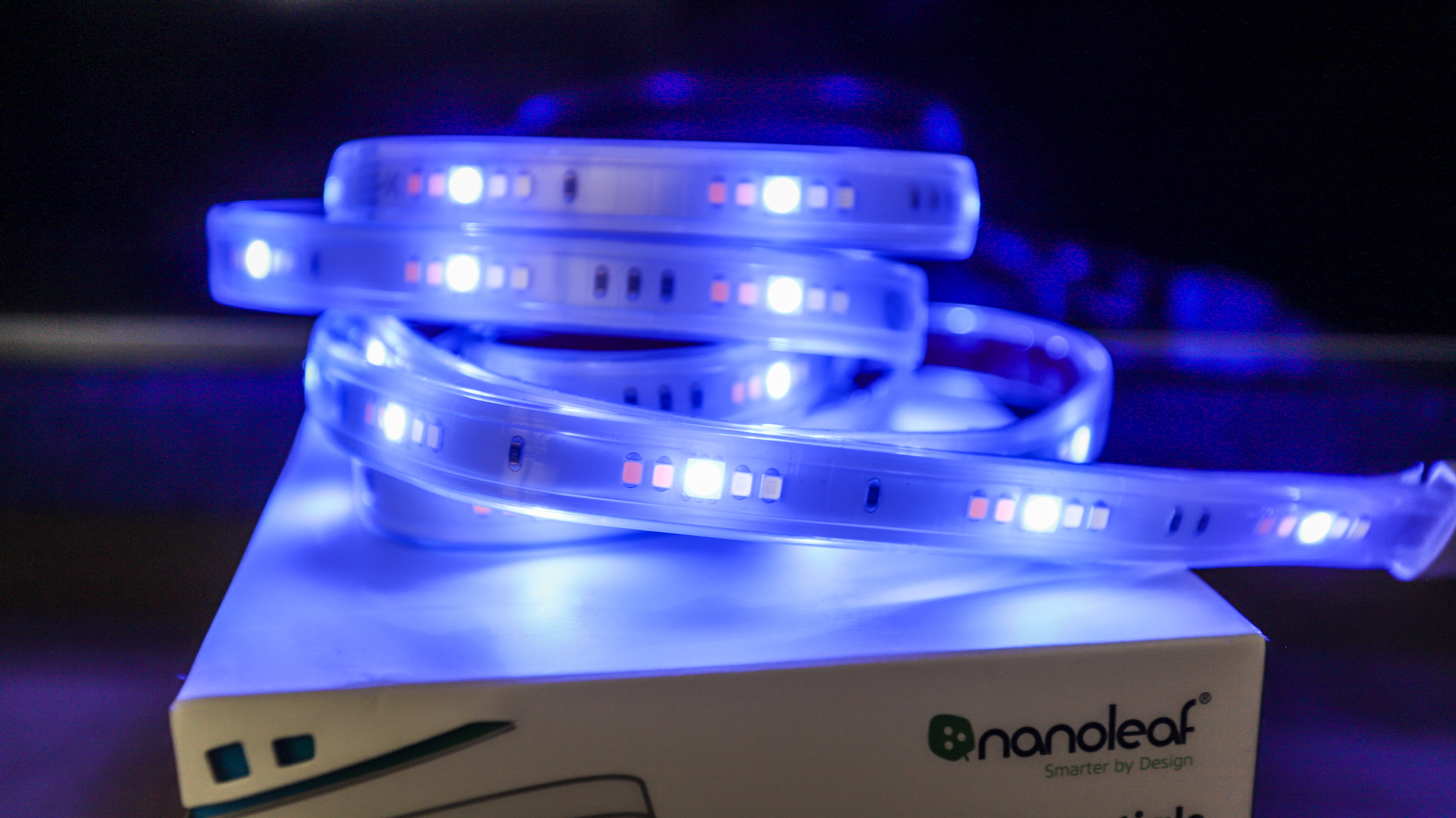
Price and availability
- Announced November 2020
- Affordable
- Expansion packs available
At just $49.95 / £44.99 / AU$99.99 for the two-meter strip, the Nanoleaf Essentials Lightstrip is arguably the most affordable smart light strip you can get today. In comparison, the 2m Philips Hue equivalent (V4 White and Color Ambiance) costs about $80 / £70 / AU$149. That makes the Essentials a far more attractive option, with a similar feature set and Thread connectivity built in.

Design
- Available in 1m and 2m packs
- Has its own controller
- 21 LEDs per meter
The Nanoleaf Essentials Lightstrip isn’t remarkably different from most others available on the market today. The starter pack is a 2m (80 inches) strip that’s a touch over half-inch wide, housing 21 LEDs per meter in groups of five.
Meter-long (40-inch) expansions are available, and up to eight can be connected to the Lightstrip for a total of 10m (400 inches). Anything more and the brightness will be affected.
Like the Nanoleaf light panels, the Essentials Lightstrip has a peel-and-stick adhesive layer on the back, and comes with a power cable connected to a small controller (also with its own adhesive pads) at one end and a rather chunky AC adaptor at the other. Another small cable connects the strip itself to the controller via tiny pins.
The controller can handle all the basic functions – power on/off, cycle through single colors and dim/brighten the light. It can’t change Scenes, though, for which you will need to use the Nanoleaf app.
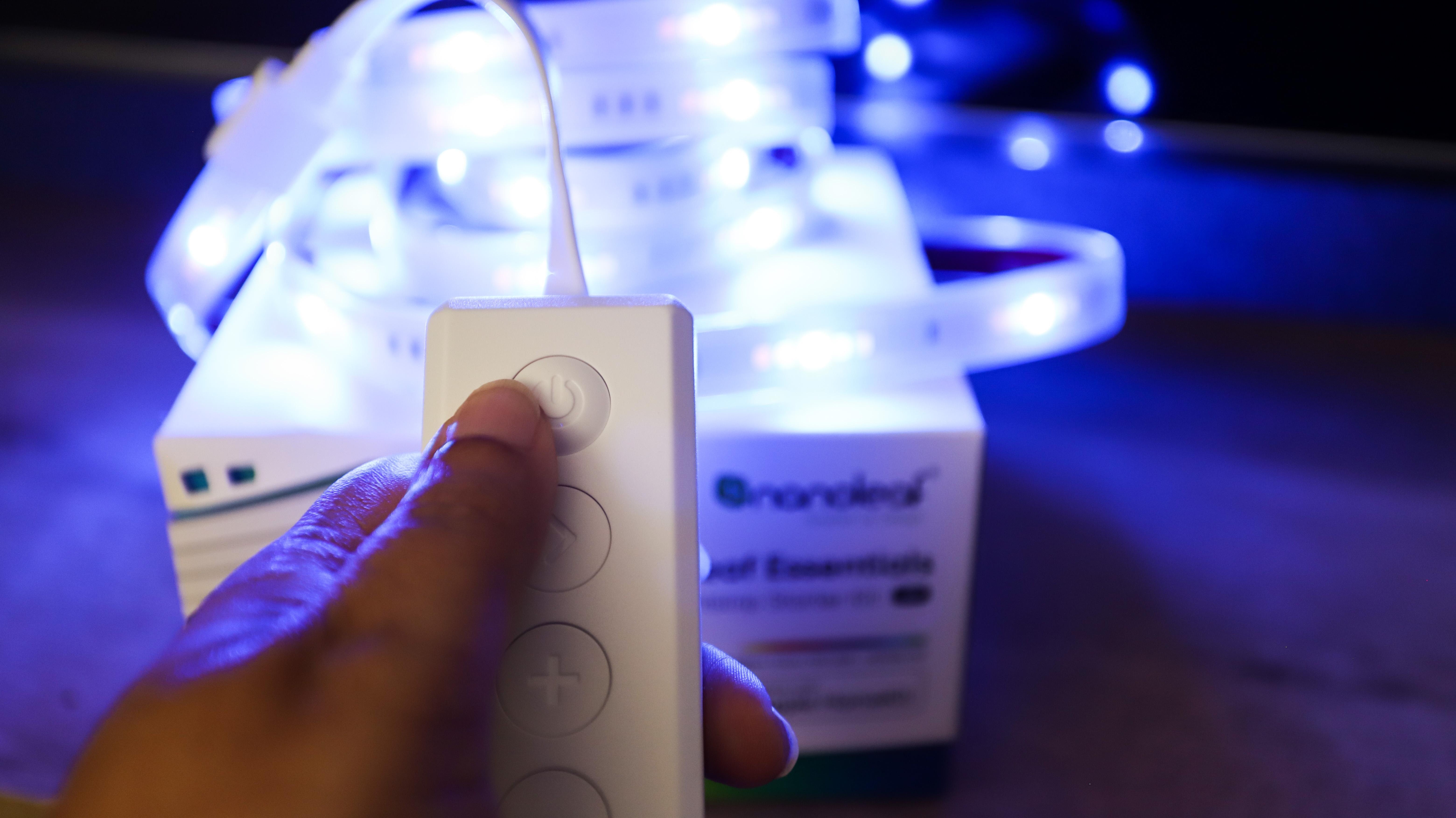
Setup
- Easy to use
- App not intuitive
Setting up the Nanoleaf Lightstrip isn’t very different from any other light strip on the market. You need to measure the surface you want the lights on, then cut the required length and stick it on. You can’t cut anywhere, of course – Nanoleaf has marked the correct spots with a scissor icon at intervals of 33cm (13 inches), so your final strip might be either a little small or a little longer than you might need, an issue you’ll face with any light strip.
Once you’ve stuck your strip where you want it, you can stick the controller to a nearby surface (wall or shelving unit) to resemble a switchboard. Then plug the AC adaptor into a wall socket, switch it on and scan the QR code provided in the box with either Apple’s Home app or the Nanoleaf companion app. Even if you use the latter and happen to be an iPhone or iPad user, the light will automatically get added to the Home app. You can set it up via the Google Home app if you’re an Android user.
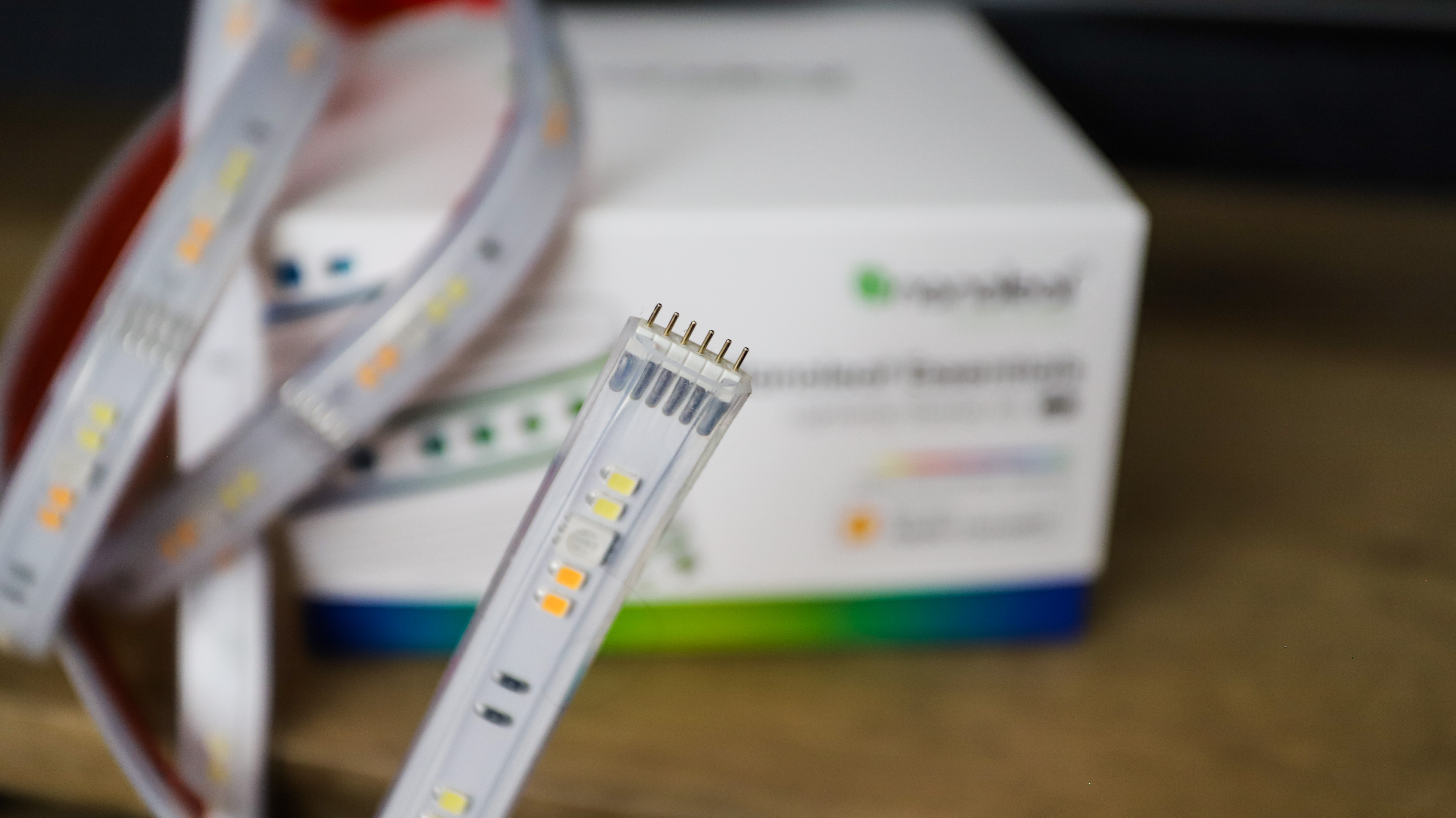
As mentioned earlier, the Lightstrip is Thread-enabled, meaning there’s an alternate way to connect, provided you have what is called a Thread ‘border’ router. While there are several devices from Google and Amazon that have Thread radios in them to work as routers, none of them have been ‘switched on’, with the sole exception of the Apple HomePod mini and, more recently, the latest Apple TV 4K. If you happen to own Apple’s diminutive smart speaker or streaming box, the Lightstrip will be connected immediately with no extra steps needed.
When connected via Thread, the Lightstrip is quick to respond, but is a little slower when used over Bluetooth.

Performance
- Very bright
- Advanced features need Thread connectivity
The light strip has a rated life span of 25,000 hours, with white light temperatures ranging from a warm 2,700 Kelvin to a cold 6,500 Kelvin. There’s also support for 16 million colors but only a single color can be displayed at a time, which is a shame as the effects of color zones can be quite mesmerizing.
For a light strip, the Essentials is bright – where the Philips Hue V4 White and Color Ambiance has a maximum brightness of 1,600 lumens, the Nanoleaf tops out 2,200 lumens, with average brightness of 2,000 lumens. When using a just a white or yellow hue in full brightness, it's enough to light up a room quite well.
If you already have an Apple HomePod mini or the Apple TV 4K and have connected the Lightstrip using Thread protocol, then you’ll find the lights responding to any command immediately. On the other hand, if you’ve connected via Bluetooth – which is what will happen if you don’t own a HomePod mini – the lights take between two to four seconds to respond, even if you’re well within range. This lag is a little longer than what we found with the Essentials A19 light bulb working over Bluetooth, and can be a little frustrating, but not once did we find that the Lightstrip failed to respond.
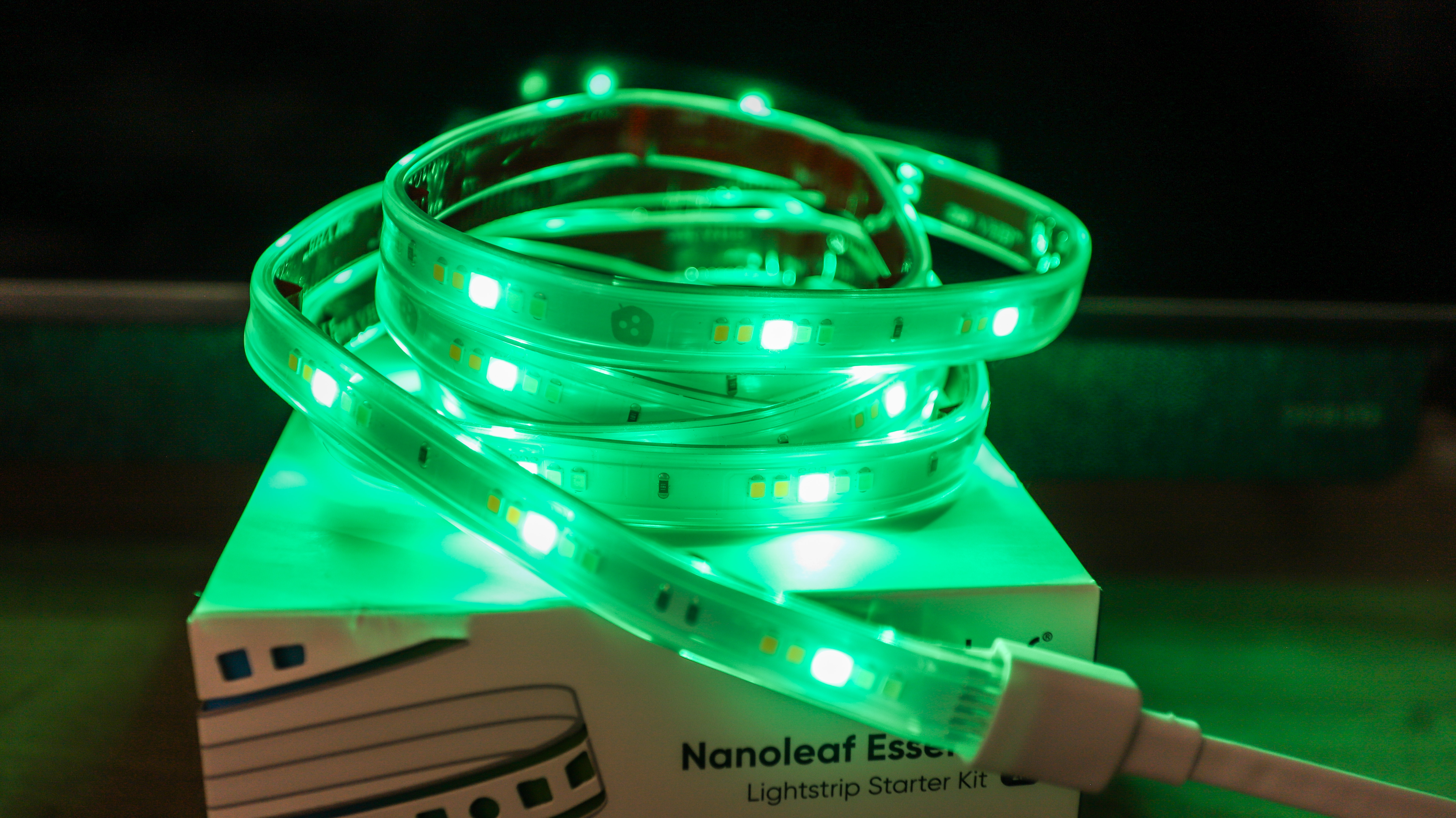
At launch, the Lightstrip’s most interesting features hadn't been rolled out yet, like being able to mirror a monitor’s colors or the lights syncing to existing Nanoleaf Shapes panels and ambient music. A recent firmware update has now added those features, but you will have to be connected to a Thread device to use those features – anyone operating the light strip via Bluetooth is going to lose out.
That said, Circadian Lighting is available on the Lightstrip (like it is on the Essentials bulb) and this automatically tunes the color temperature of the light to suit the time of day in your location. You can also apply some Scenes that are available on the Nanoleaf app (there's a vast library of those), and the adventurous can create their own custom Scenes, but note that only a single color will be displayed at a time – no rainbow hues here.
While the Lightstrip is compatible with both Siri and Google Assistant, there’s no support for Alexa, although Nanoleaf has promised that it’s high on its to-do list.

Verdict
While smart bulbs have become commonplace, light strips are still not quite as mainstream. But when you have one that’s as affordable as the Nanoleaf Essentials Lightstrip, it’s easy to reach for it. And you really don’t need an Apple HomePod mini to use the Lightstrip. Yes, it’s slow to respond when connected via Bluetooth, but that’s on the wireless protocol, not a problem with the smart lights. Once more Thread-enabled devices become available, the need for Bluetooth connectivity might be eliminated.
Until then, there are just a couple of Apple devices that can be used to take full advantage of the Essentials Lightstrip, an important consideration if you want to play around with the advanced features like monitor mirroring and music syncing. If you can live without those features, though, we couldn’t recommend the Essentials Light Strip highly enough.
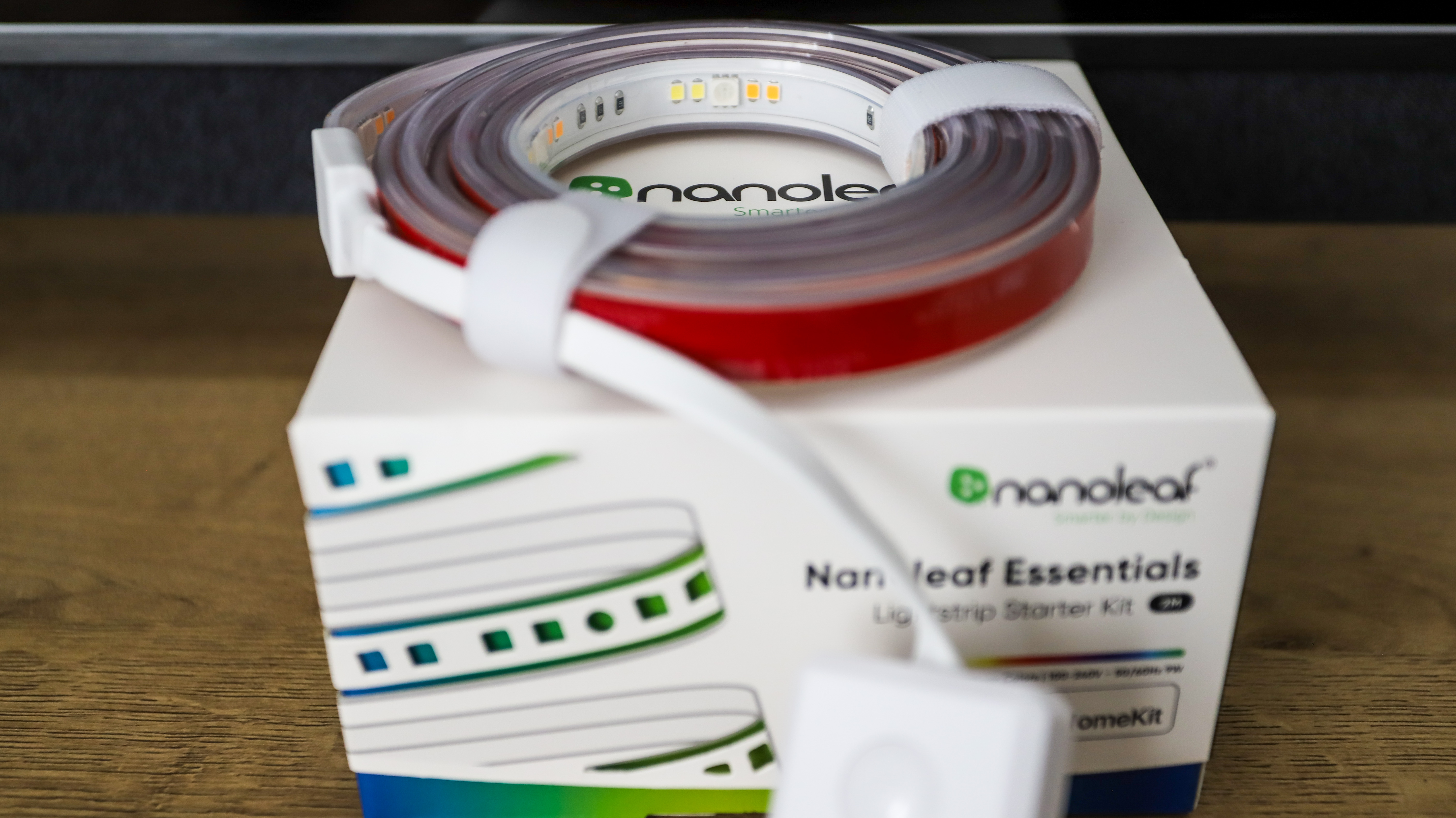
Should I buy the Nanoleaf Essentials Lightstrip?
It’s easy to answer that question with a simple ‘yes’, but only if you’re really keen on bias lighting. The good thing about bias lighting is that it doesn’t have to be for a TV or a computer monitor – you can stick the Essentials Light Strip on shelving units and even behind your bed’s headboard for some beautiful effects.
It’s bright enough to be the only light source you might need in a small room (albeit not to read by) and the colors are absolutely gorgeous. If you can be patient with its response time over Bluetooth, then you’ll be hard-pressed to find a similar product as affordable and feature-packed as the Essentials Light Strip.
[First reviewed March 2021]

While she's happiest with a camera in her hand, Sharmishta's main priority is being TechRadar's APAC Managing Editor, looking after the day-to-day functioning of the Australian, New Zealand and Singapore editions of the site, steering everything from news and reviews to ecommerce content like deals and coupon codes. While she loves reviewing cameras and lenses when she can, she's also an avid reader and has become quite the expert on ereaders and E Ink writing tablets, having appeared on Singaporean radio to talk about these underrated devices. Other than her duties at TechRadar, she's also the Managing Editor of the Australian edition of Digital Camera World, and writes for Tom's Guide and T3.
